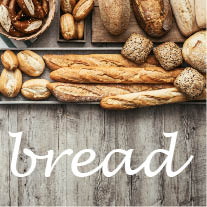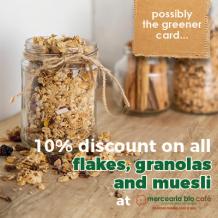About the Bread...

Did you know that…
... the first bread was born in Egypt, thousands of years BC, and was made from a mixture of cereals grown along the banks of the Nile River, free from yeast. It was, therefore, a compact mass, that began to gain volume with the discovery of the yeast and use of the furnace in its production.
.... bread is a universal food, the basis of human food, both in underdeveloped countries and in developing or developed countries and typically used in the Mediterranean diet.
... currently in Portugal, the maximum amount of salt in bread must meet 1.4g per 100g of bread, stipulated by law. Since the end of May, the registration process for the "Less Sal, Same Flavour" program (promoted by the General Directorate of Health, Instituto Ricardo Jorge and the Ministry of Health) is underway for the awarding of stamps of excellence. where the goal proposed to to bakeries is to bake bread with a maximum of 1,0g of salt per 100g of bread.
... The bread is not fattening at all !!!!
The bread
... legally, by definition, results from the basic mixture of cereal flour with water, yeast and salt. Being an inexpensive, easily accessible, simple, low-processed, low-calorie food whose nutritive and energetic richness may vary according to the ingredients added (dehydrated fruits, oleaginous fruits, seeds, olives, dairy products, processed meats, fats, herbs, spices, horticultural products ...).
... may be of traditional, hand made, organic, fresh, long-term, simple manufacture with the addition of other ingredients which enrich it or simply increase both its durability and its variety in the consumer's offer.
... should be part of the daily diet and, as indicated on both the Portuguese Food Wheel and the Mediterranean Food Pyramid, corresponds to basic food whose nutritional richness depends on the type of flours used and the added ingredients.
... should not be eliminated from our daily diet and replaced by industrialized toast, or worse, by industrialized biscuits. Nowadays, whatever the reason that causes us to reduce the consumption of bread, the behavior should be the same, reducing the amount consumed and looking for the variety or varieties that best fit each person and do not stop its consuption.
... concept image that should be used in the consumption of cereals and derived products, the less refined the flour used in its manufacture, the more nutritious and healthy it will be. By considering the whole grain of the cereal and richness contained in either the germ or the endosperm, just by keeping the parts of the cereal intact, as in whole flours, it is possible to maintain their respective nutritional value (polyunsaturated fatty acids; starch, proteins, vitamins E and B complex and minerals). That is, the more refined the flour used in the production of bread, the more uninteresting and nutritionally poor it becomes.
... can be a great supplier of dietary fiber, all it takes is to prepare it with whole flours, and may also contain seeds or raisins. The richness in fibers is one of the great benefits in the consumption of bread, for all the advantages that these represent for the health, regarding the decrease of the values of cholesterol, triglycerides, blood pressure, glicemia, regulation of the intestinal functioning, control of the appetite , prevention of numerous types of cancers, among others.
... can be produced without using wheat flour, eliminating the presence of gluten, which is often one of the basic requirements of selection. However, gluten functions in the production of bread as a base element in the characteristics of viscosity, elasticity and resistance of the dough, so that, in the absence thereof, it is necessary to be replaced by alternative techniques to ensure these characteristics.
... can and should be part of daily snacks (schoolchildren, at work, at home) and, in certain main meals, may represent the energy alternative, replacing other foods that are more traditional and often consumed with large quantities of carbohydrates (potatoes , rice, pasta). Who does not prefer sardines on a slice of bread, the horse mackerel pushed with bread, bread dipped in the oil of boiled fish or in the tomato salad sauce, the "açordas" and "pots", the soups and stews with toasted bread, the tomato soups with bread base, summer snack with bread and butter, fresh cheese sandwich with lettuce and tomato at the beach, winter tea with toast, etc. Having proper care and guidance (according to individual daily energy needs) in the quantities ingested.
As with everything else regarding our diet and food in general, the secret is not to eliminate bread, but rather to select the best according to the offer.
Vanessa do Carmo

green card - flakes, granolas and muesli
For the Mercearia Bio Green Card hol...
Read article



